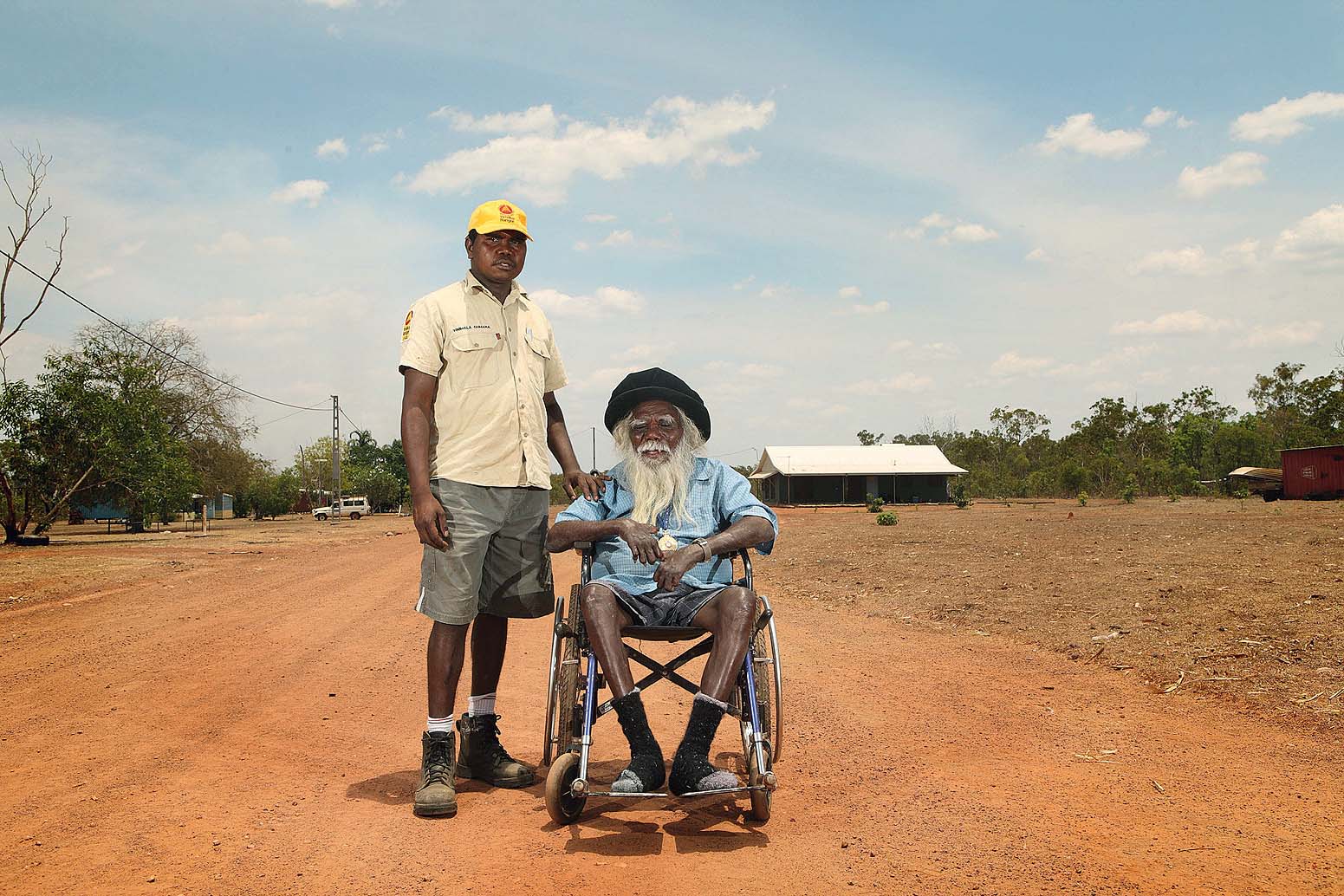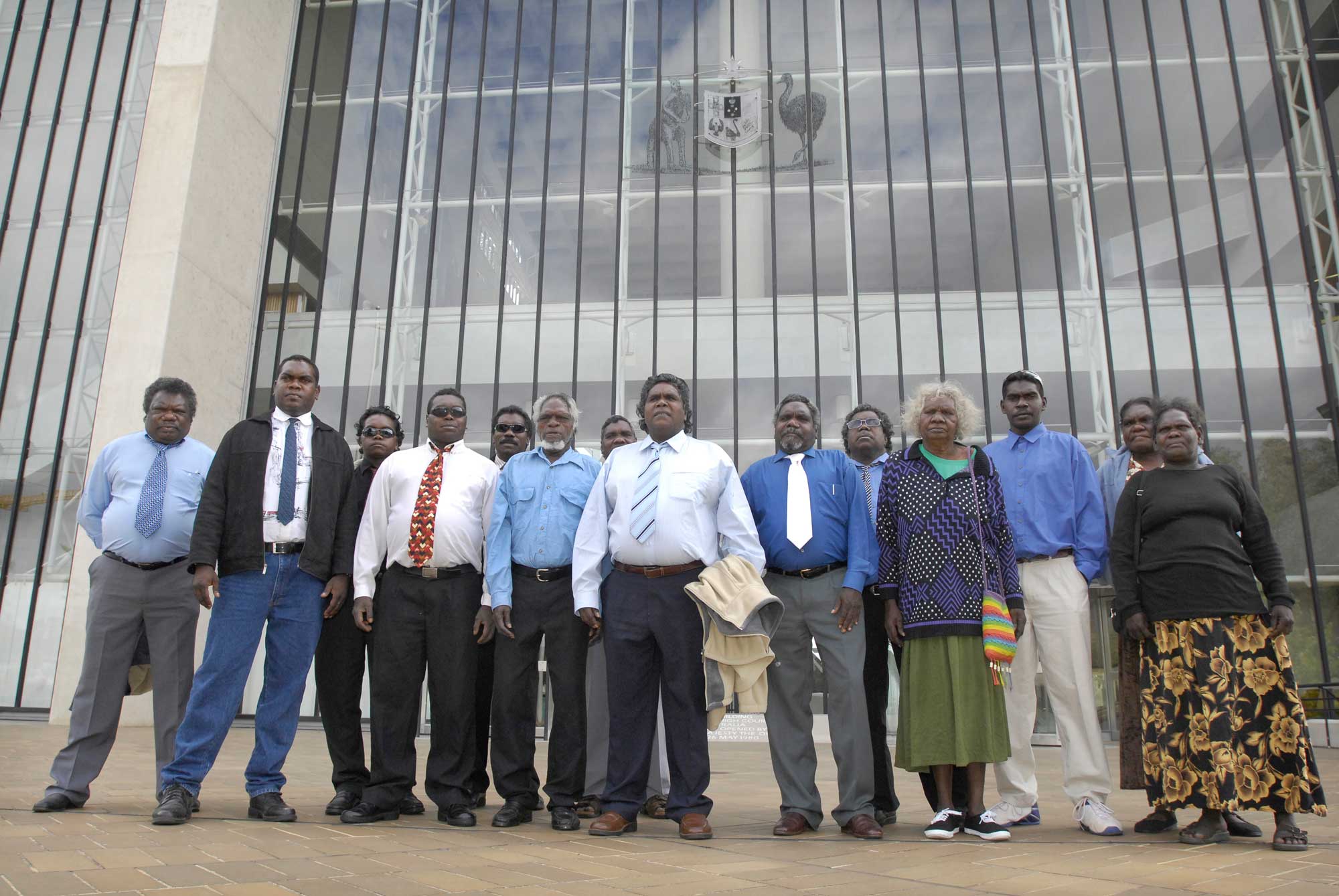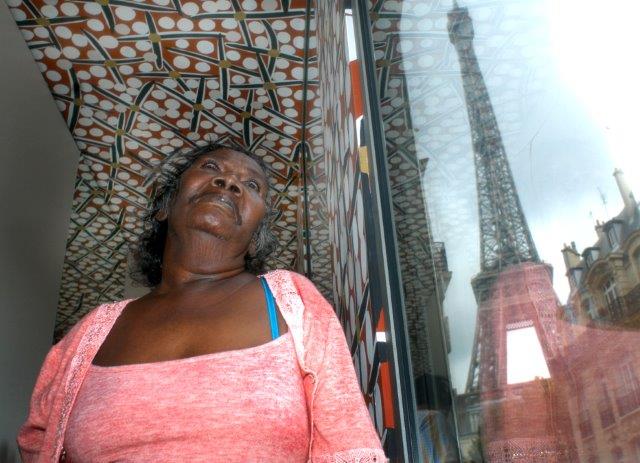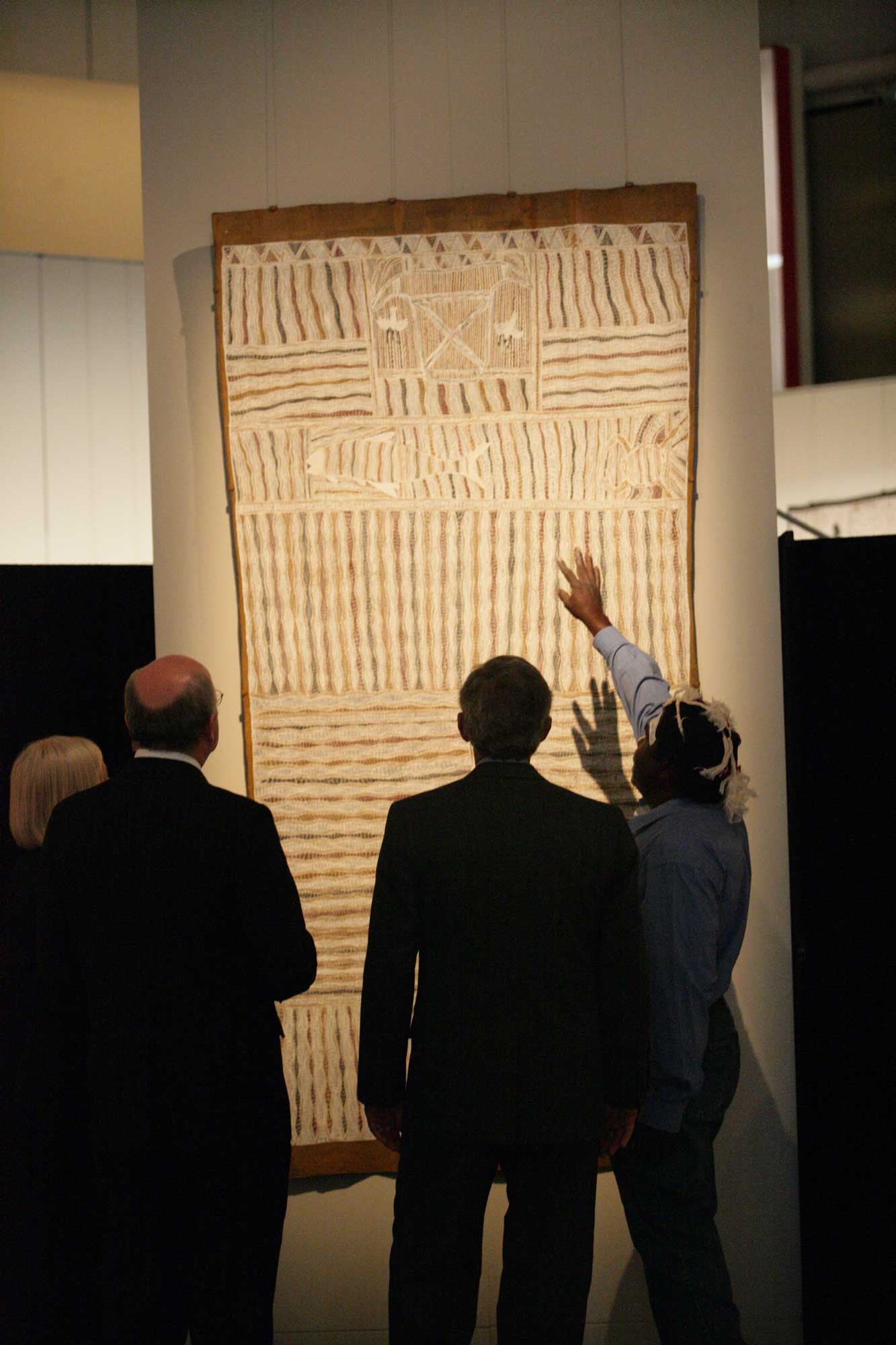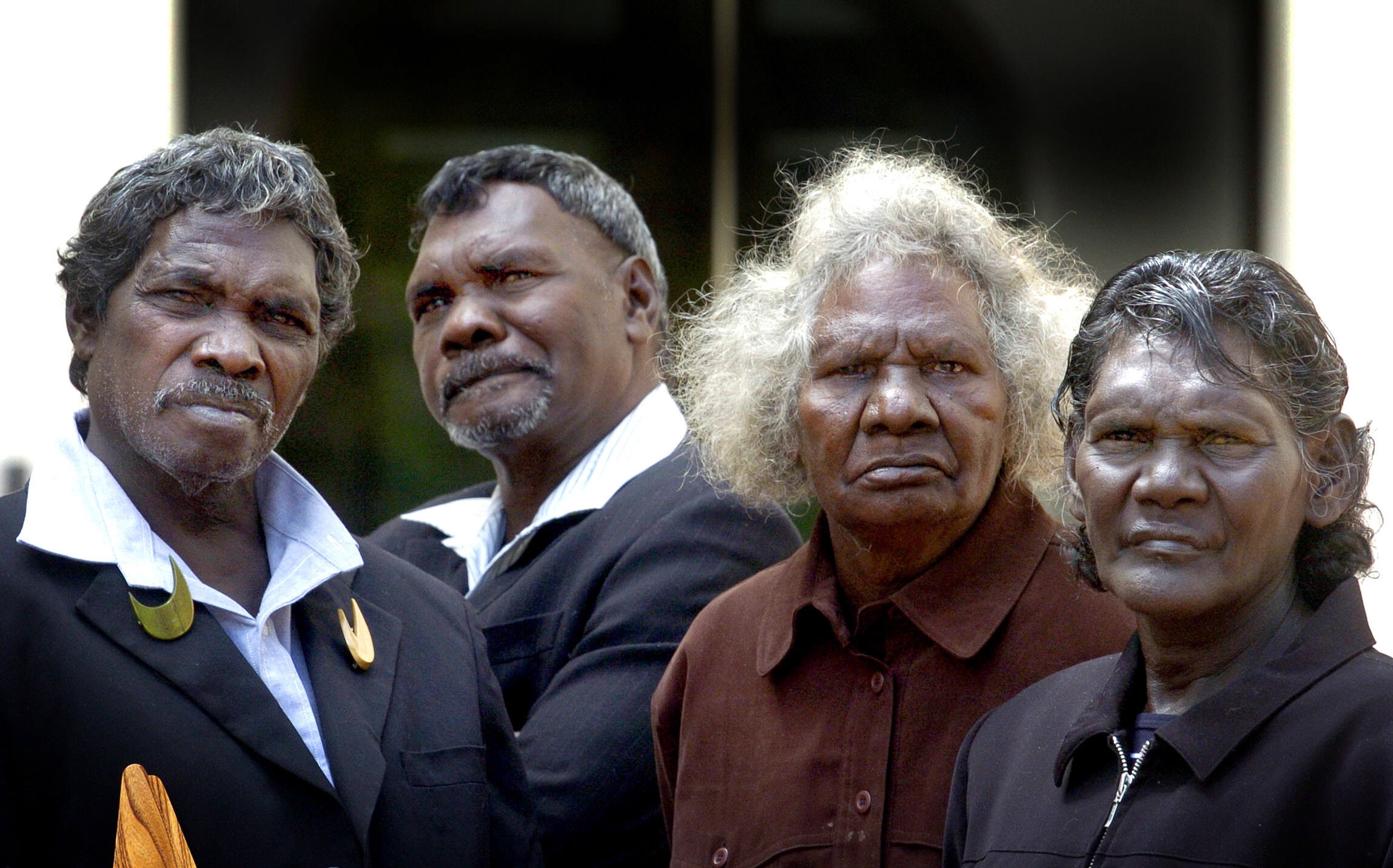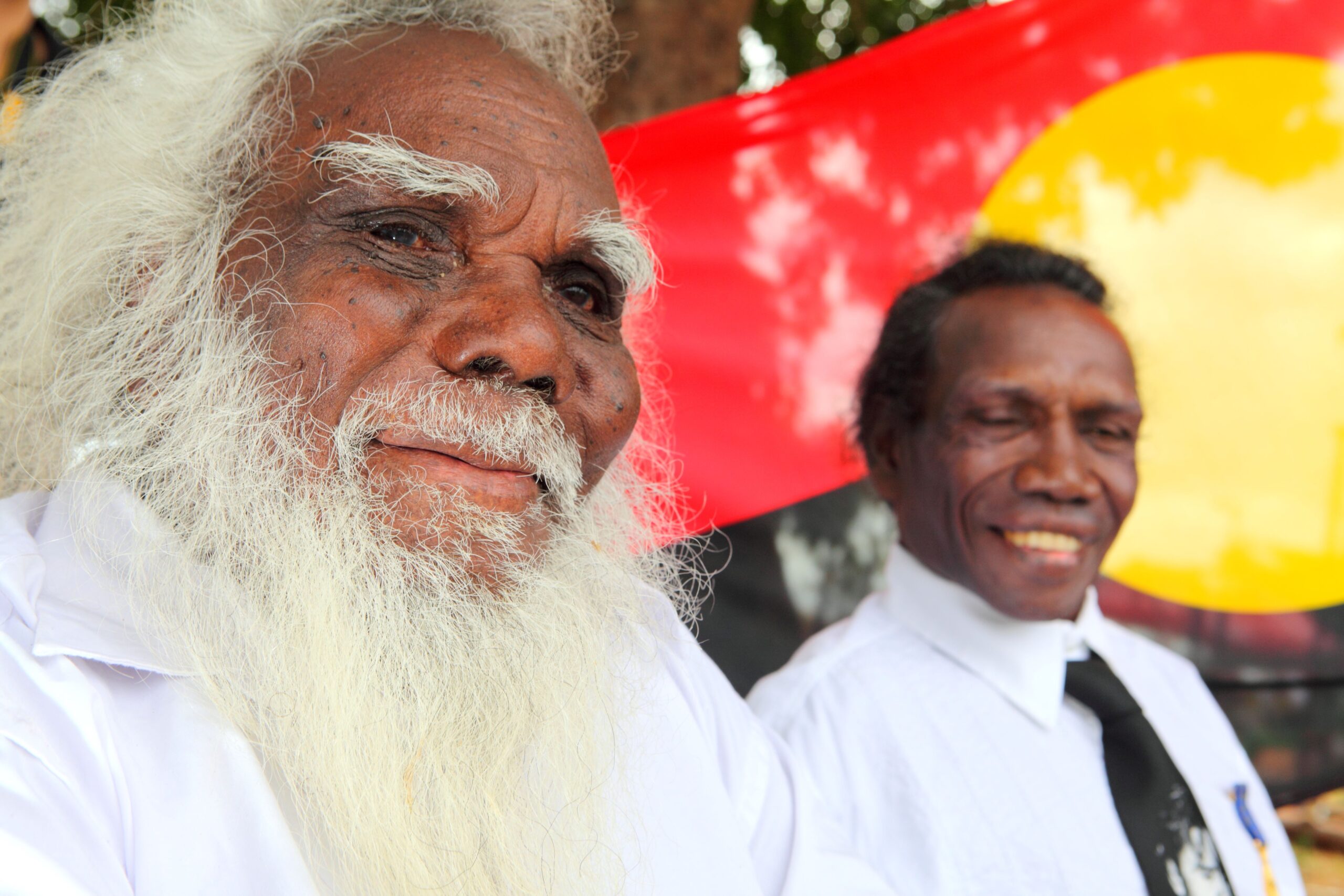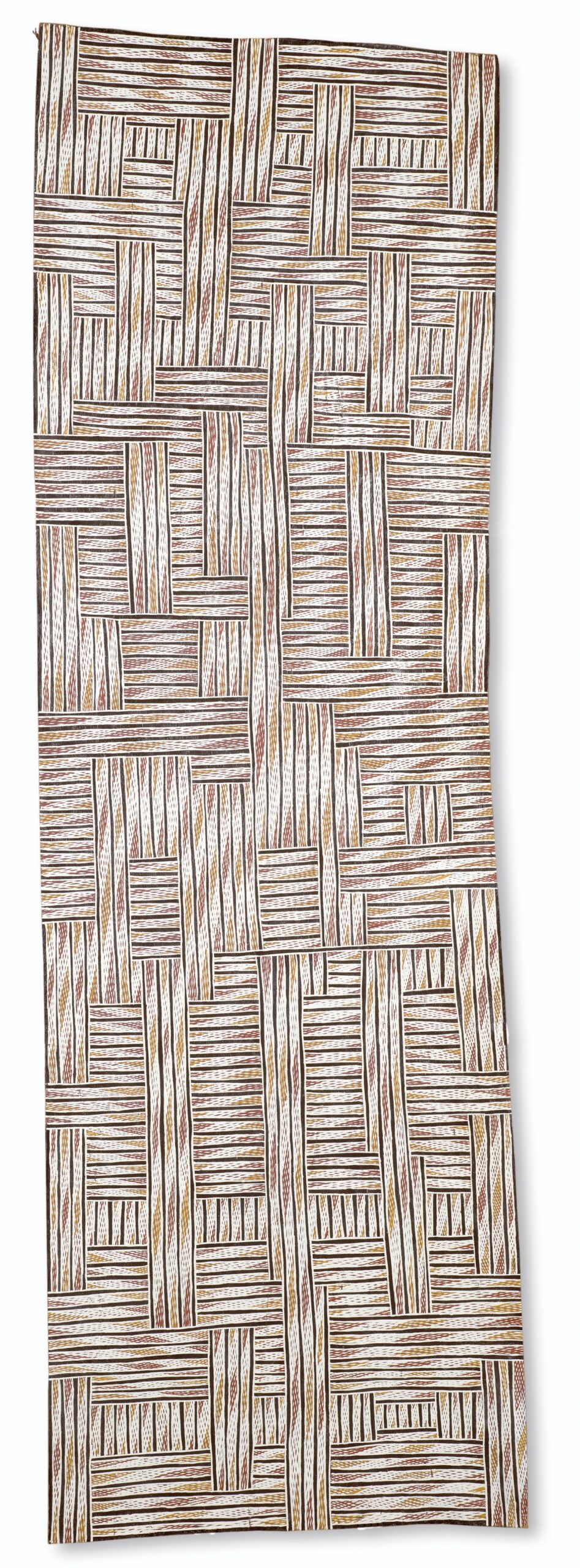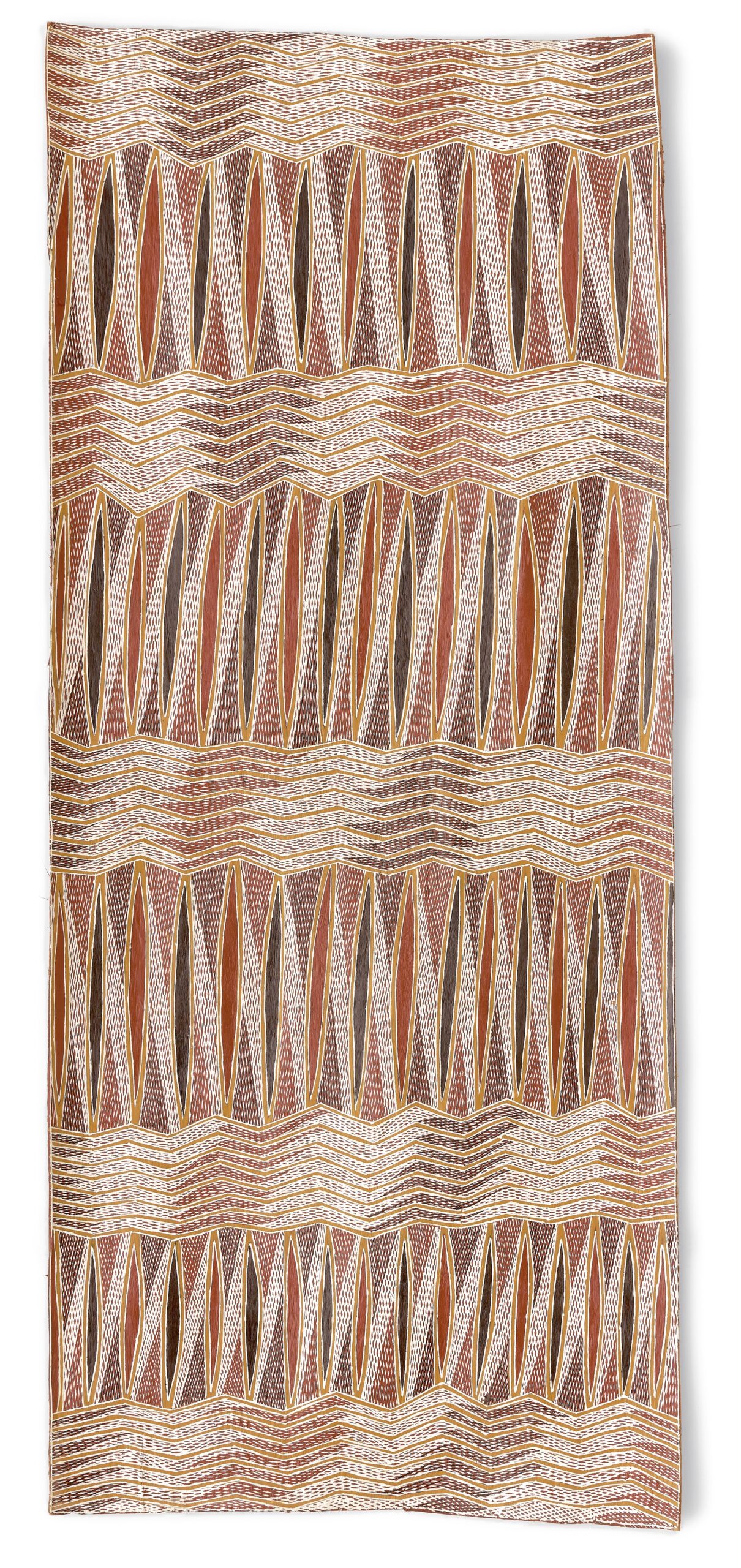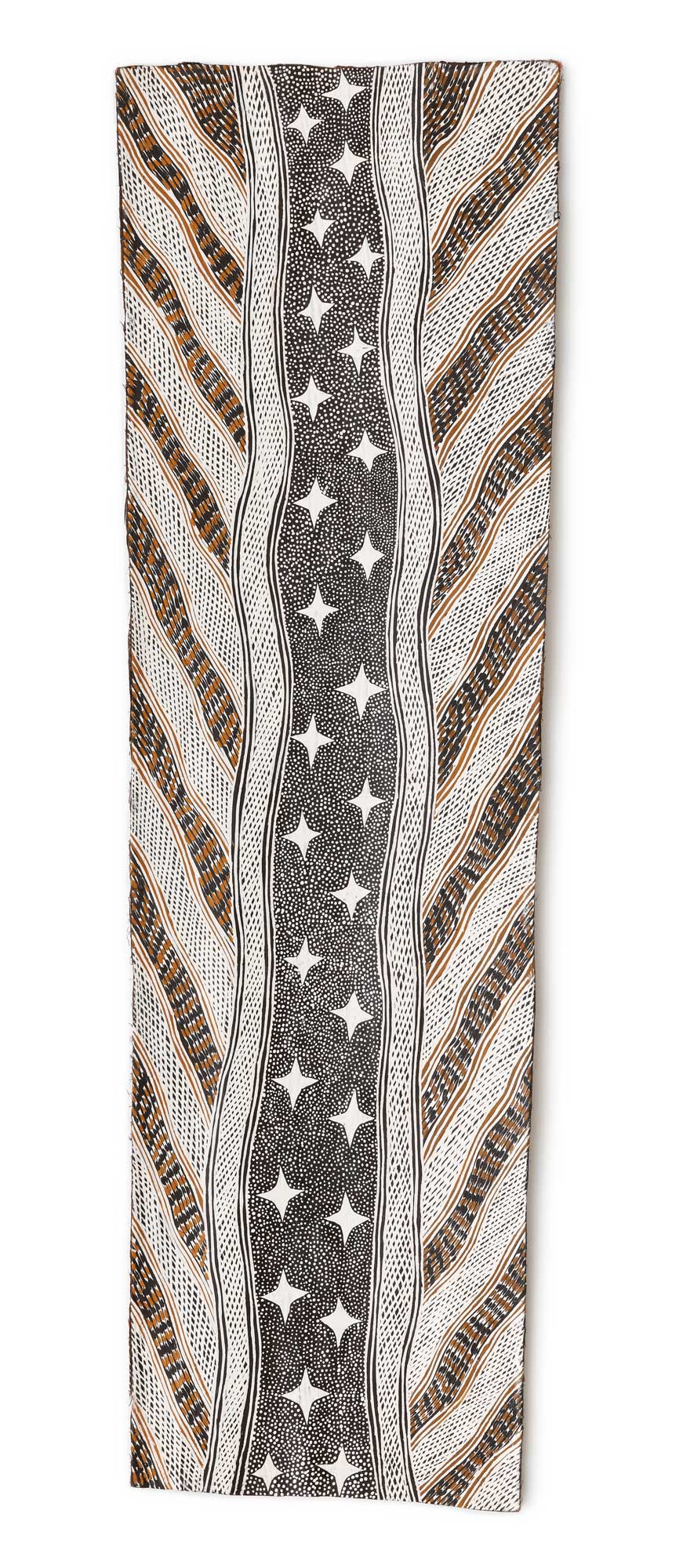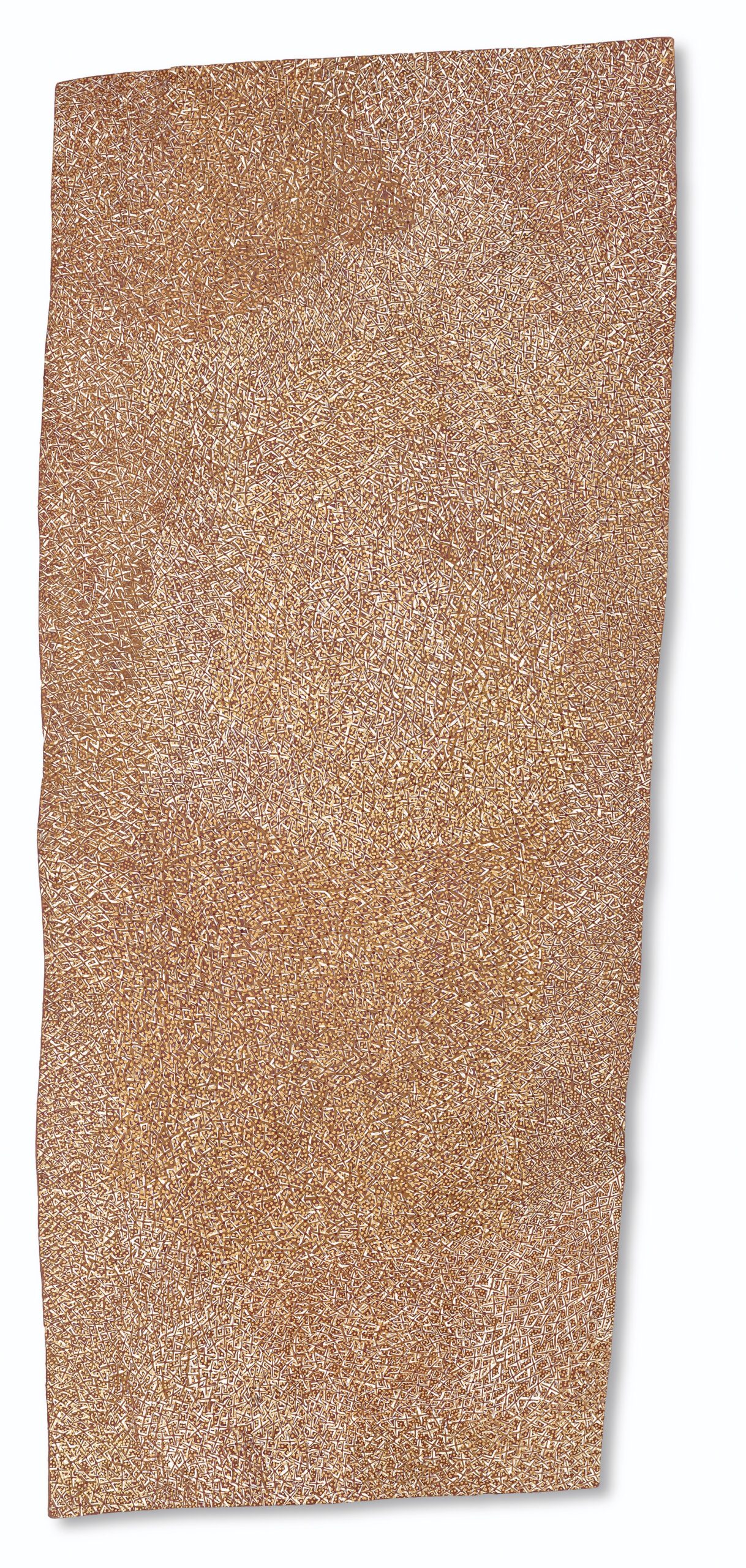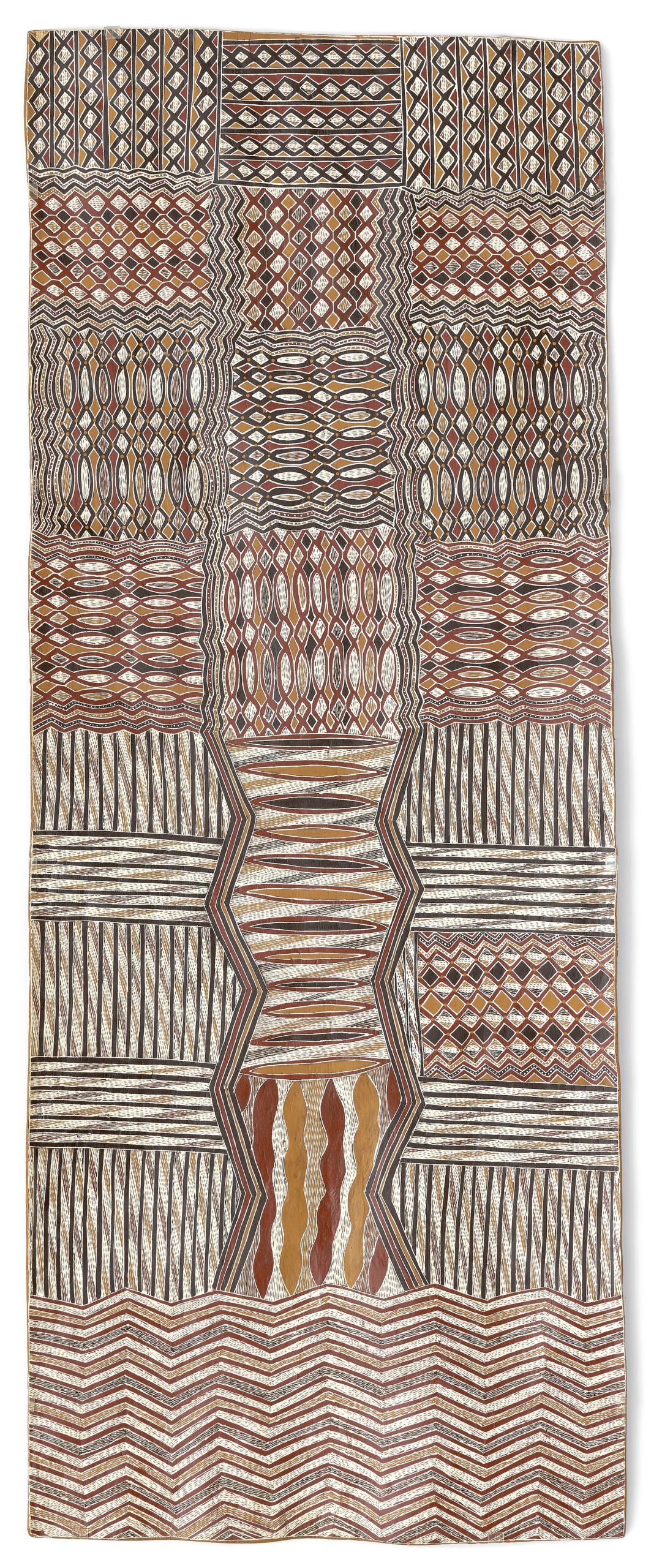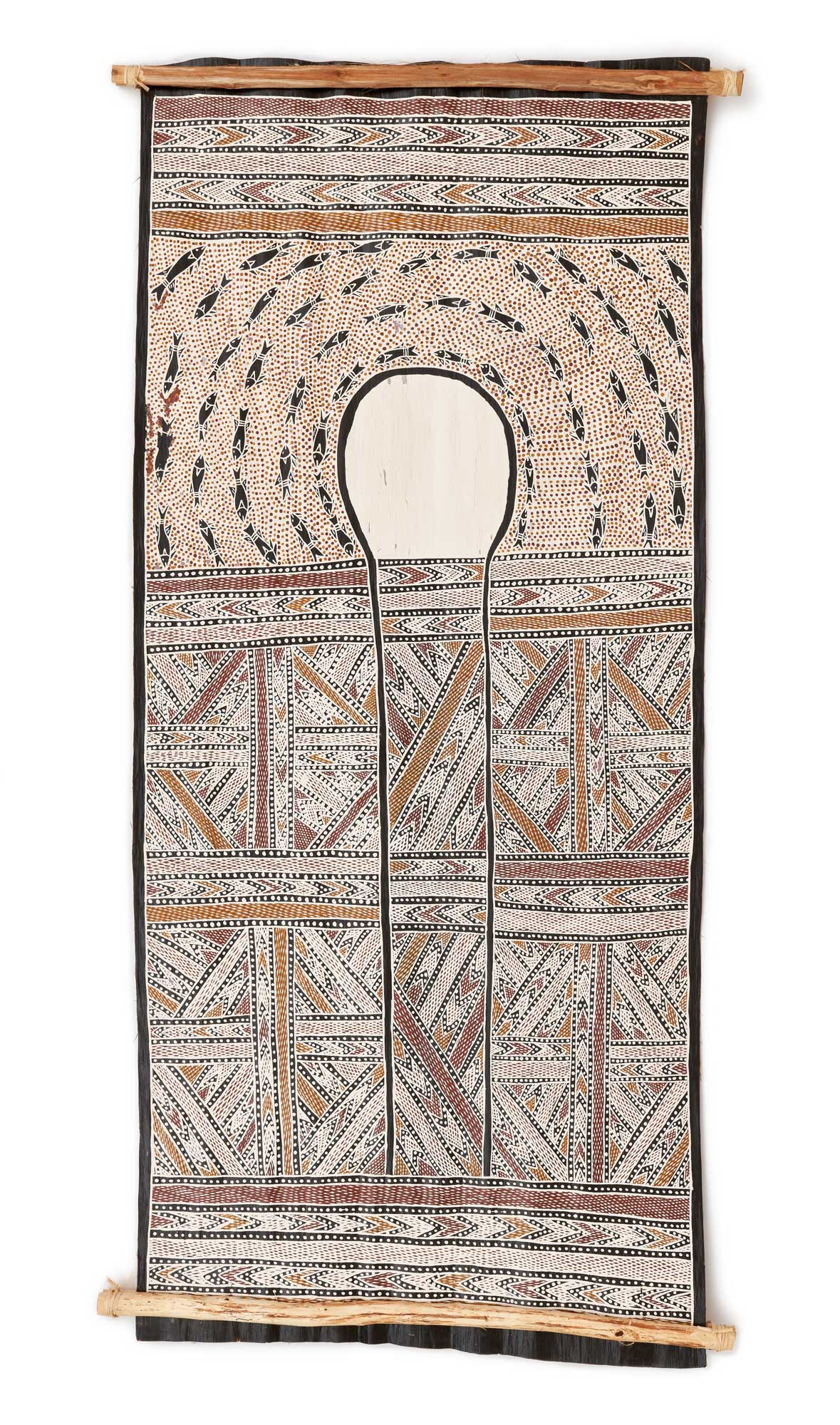2000s
The 2000s saw Buku-Larrŋgay Mulka rise to be one of the most successful Indigenous arts organizations in Australia. The Mulka Project is formed as a permanent archive and media unit. Women artists emerge as a new powerhouse of the movement while “Young Guns” suggest a bright future for Yolŋu art. Following the Saltwater Project, artists increasingly abandon figuration. In 2008 the High Court of Australia recognizes Indigenous ownership of the intertidal zones after the successful Blue Mud Bay Sea Rights campaign.
2000
Araluen Maymuru is appointed print studio coordinator at the Yirrkala Print Space (2000–2008).
The split sticks that had been used to frame both short ends of bark paintings since the 1950s are replaced by metal frames, which encourages artists to paint to the edges of the bark.
Naminapu Maymuru-White is awarded the HC Coombs Creative Arts Fellowship at Australian National University, Canberra.
Mowarra Ganambarr is awarded the Medal of the Order of Australia (OAM).
Gulumbu Yunupiŋu is represented at the World Expo in Hanover, Germany, with an installation of 60 barks depicting the Seven Sisters star cluster.
2001
Will Stubbs takes over as art center coordinator at Buku-Larrŋgay.
From 2001 to 2011, the Australian businessman Kerry Stokes collects ḻarrakitj, including 110 Yolŋu memorial poles from northeast Arnhem Land.
Banduk Marika wins the Red Ochre Award from the Australia Council for the Arts, which recognizes Indigenous Australian artists for their lifetime achievements.
Dreamtime, Our Time: The Eternal Circle opens at the University of South Florida Contemporary Art Museum, Tampa.
2002
Gawirriṉ Gumana, with assistance from Yinimala Gumana, wins first prize at the 19th National Aboriginal and Torres Strait Islander Art Awards for Birrkuda Riŋgitj Hollow Log (2002).
Art of Arnhem Land, 1948–1952: Paintings on Bark and Wood Collected by the Anthropologist Charles Mountford opens at the South Australian Museum, Adelaide.
2003
Leaders of the Dhuḏi-Djapu’ clan Dhukaḻ and Wuyal Wirrpanda lead a reconciliatory memorial for Dhäkiyarr Wirrpanda. They install nine ḻarrakitj (memorial poles) in the Northern Territory Supreme Court in Darwin during a Wukiḏi ceremony.
Djambawa Marawili receives a two-year Aboriginal and Torres Strait Islander Arts Fellowship from the Australia Council.
Gawirriṉ Gumana is appointed an Officer of the Order of Australia (AO).
Buwayak = Invisibility opens at Annandale Galleries, Sydney.
2004
Gulumbu Yunupiŋu is awarded first prize at the 21st National Aboriginal and Torres Strait Islander Art Awards for her installation Garak, the Universe (2004).
2005
Dhambit Munuŋgurr is given special dispensation to use acrylic paint following a car accident that made it difficult for her to use traditional natural pigments on bark.
Yäkumirri: People Who Have a Name— Yirrkala Barks opens at Holmes à Court Gallery, West Perth, Western Australia.
2006
The Laynhapuy Indigenous Protected Area is dedicated.
Dianne and Andrew Blake return to Buku-Larrŋgay, with Andrew serving again as art center coordinator (2006–10) and Diane as an adviser and printmaker at the Yirrkala Print Space (2006–10).
Gulumbu Yunupiŋu, along with seven other Indigenous Australian artists, is commissioned by the Musée du quai Branly, Paris, to produce permanent installations on the ceilings and facade of the building on rue de l’Université.
Djambawa Marawili is selected for inclusion in Zones of Contact: The 15th Biennale of Sydney.
Young Guns opens at Annandale Galleries, Sydney.
2007
The Mulka Project opens at Buku-Larrŋgay with funds from the sale of the Saltwater collection. It is a production house, archive and training facility managed by Yolŋu Law, governance and culture. Wukuṉ Waṉambi is the founding cultural director.
Gawirriṉ Gumana and Raymattja Gandjalala Marika are awarded honorary doctorates from Charles Darwin University.
Raymattja Gandjalala Marika is named Territorian of the Year and Northern Territory Australian of the Year by the National Australia Day Council.
Gulumbu Yunupiŋu is selected for inclusion in Culture Warriors: The Australian Indigenous Art Triennial at the National Gallery of Australia, Canberra. The exhibition travels to the Art Gallery of South Australia; Art Gallery of Western Australia; Queensland Art Gallery; and American University Museum at the Katzen Center.
2008
The High Court of Australia rules in favor of the Yolŋu in the Blue Mud Bay case following a series of appeals in federal court. Indigenous ownership of the intertidal zone is recognized for the first time under the Aboriginal Land Rights (Northern Territory) Act of 1976.
Buku-Larrŋgay Mulka Inc. is incorporated under the Northern Territory Incorporations Act. It is now divided into the Yirrkala Art Centre and the Mulka Project.
Gunybi Ganambarr wins the Xstrata Coal Emerging Indigenous Artist Award at the Gallery of Modern Art at the Queensland Art Gallery, Brisbane; Djirrirra Wunuŋmurra wins the TOGart Contemporary Art Award, Parliament House, Darwin.
2009
Gawirriṉ Gumana wins the Red Ochre Award from the Australia Council for the Arts, which recognizes Indigenous Australian artists for their lifetime achievements.
Raymattja Gandjalala Marika is posthumously appointed a Member of the Order of Australia (AM); and Waninya Gary Marika is awarded the Medal of the Order of Australia (OAM).
Yirrkala Artists, Everywhen: Bark Paintings from the State Art Collection opens at the Art Gallery of Western Australia, Perth.
The 3rd Moscow Biennale of Contemporary Art, Against Exclusion, opens. Djambawa Marawili is a major contributor and performs a ceremony in front of his work at the opening.
Ancestral Power and the Aesthetic: Arnhem Land Paintings and Objects from the Donald Thomson Collection opens at the Ian Potter Museum of Art, University of Melbourne, and tours regional galleries in Australia through 2013.
